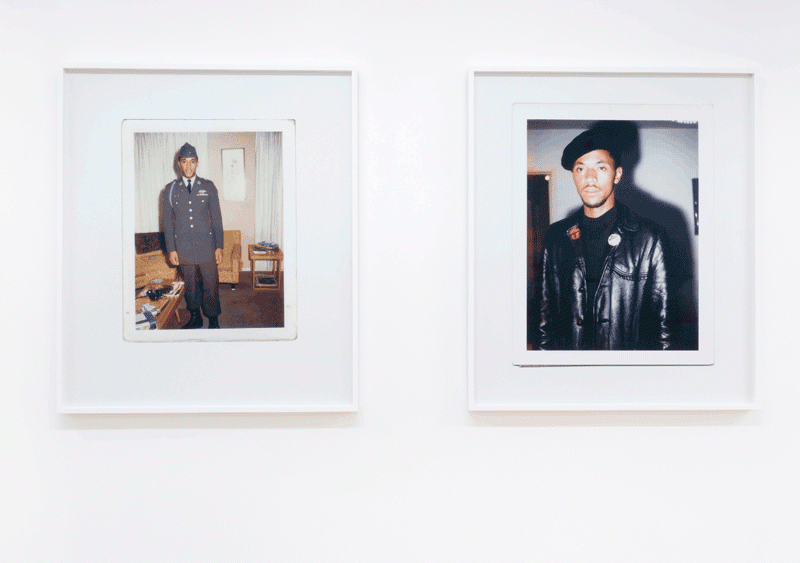Baxter St Camera Club of New York,18 January – 18 February 2017
Obtaining an FBI file is no simple task. Besides the arduous paperwork and patience required of government bureaucracy, the agency charges a dollar per page processing fee, which we might assume means we pay them a buck to redact and conceal information. Sadie Barnette applied for the FBI file of her father, Rodney Barnette, and the process imbues the document with emotional anticipation for what it might uncover. The elder Barnette drew the attention of the investigative agency for his brief membership in the Black Panther Party during the late 1960s, and excerpts from the file comprise My Father’s FBI File: Part II (2017) the centrepiece of this exhibition. Arranged in little clusters across an entire wall, the pages consolidate micronarratives throughout the document and, like the rest of the show, construct biographical vignettes that attempt to reconcile competing perspectives: an adoring daughter versus the paranoid eye of the FBI.
Scanning the pages reveals just how fastidiously the FBI logged even the most banal information. It could appear like a pulp mystery novel: a radical past and intimate links to political unrest are just the thing to spruce up the daily struggles of a family man. In fact, elder Barnette founded the Compton branch of the BPP, and was on the outer edges of Angela Davis’s circle before and during the infamous trial of the leading Communist Party USA member (and associate of the BPP.) But the file is extremely thorough and suggests that disillusionment led him from Vietnam serviceman, to black nationalism, to salesman, to postal worker. (Barnette picks up on this thread in Untitled (Dad, 1966 and 1968), 2016, a diptych of framed photographs depicting her father in military uniform versus a black beret and leather jacket respectively. Though they compare his adopted identities, the bright flash used in the taking of both images illuminates the environs of a family home.) In one scene, he lived out of wedlock with a woman, something that cost him a job; elsewhere, his neighbours and colleagues appear in a background check, vouching for his integrity. The FBI kept records on the man for five years, long after he left the BPP, and the file frequently includes extraneous information about former friends or even just contemporary events. What’s especially chilling is the way it seems that elder Barnette could be instrumentalised by the FBI, as if they kept records on him in order to build a case against even his most distant associates.
Elder Barnette’s story is hardly dispensable to his daughter. Here and there Barnette counterbalances the FBI’s dry perspective with twee formal interventions, lightly spraying the documents with black and pink ink, or bedazzling them with pearlescent crowns and glittery crystal appliques. The gesture merely breaks up the monotony of reading an entire wall of text, though when it disrupts the reading, it injects Barnette, the daughter, into the narrative with a childlike insouciance for the content. What did she feel when she read over the difficult (or even the boring) details of her father’s life? Barnette keeps her own response ambiguous, though she spares us few details from the original file. Her interventions also highlight the tension between the document’s red declassified stamps and rectangular redactions. Despite her search for answers, these details represent the limits of her inquiry; they hint at institutional power, lending the omissions a powerful aesthetic force. Barnette’s investigation is both distanced and tender, which allows it to recuperate some of her father’s story from the systematic racism that quite literally informed it. Her own reaction is embodied in the drawing Untitled (We All We Got) (2016). The phrase repeats in two arcs against the blank page, a motivational adage or empty tautology so plainly stated it tricks the eye.
From the April 2017 issue of ArtReview
